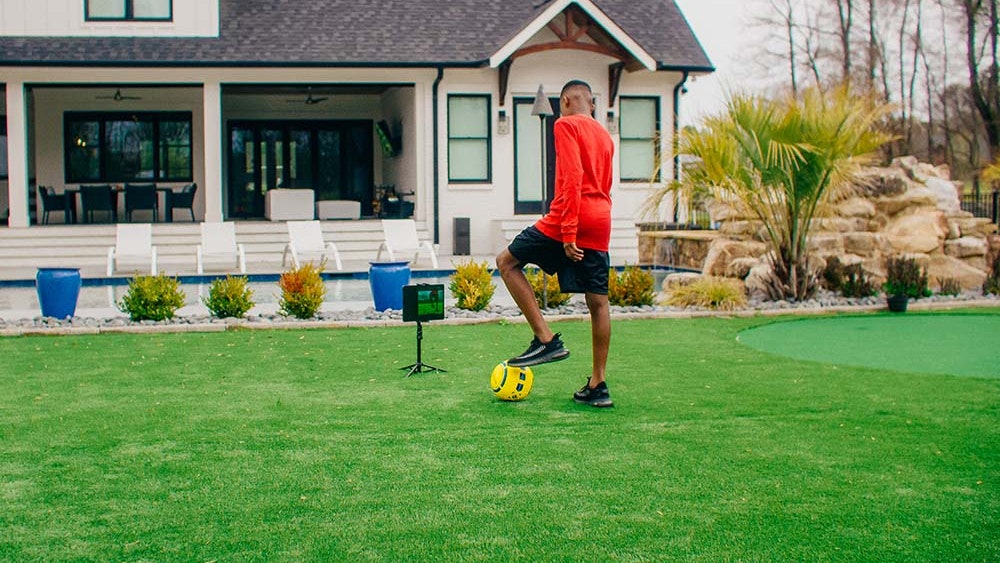
What are the positions in soccer?
A 4 and 5-year-old soccer game might be the cutest thing in the world. But there is more ball chasing than playing positions. As kids advance through the levels, the game grows with them, and coaches start training specific positions individually.
In fact, most experts recommend kids play all the positions in soccer as they develop. This lets them grow into a versatile and well-rounded athlete who can see the whole field and understand the team dynamics.
As a parent, having a solid understanding of these positions will help you better appreciate what is happening on the field so you can support your athlete’s performance.
First, let’s take a high-level overview. Soccer positions break into four categories: Goalkeeper, Defender, Midfielder, and Forward.
One of the most basic formations is the 4-4-2, which means four defenders, four midfielders, and two forwards. Many formation combinations use the pattern (4-3-3, 3-5-2, 4-2-3-1). The numbers represent the number of players in each section of the field, from defense to attack.
Positions in soccer defined
Coaches use a numbered shorthand to identify positions; they are included in ( ).
Goalkeeper (1)
A goalkeeper, or just keeper or keep, is the last line of defense and patrols the penalty area of the pitch. They are the only player able to use their hands and wear an alternative colored kit (aka uniform), so they stand out from the other players. Their job is to keep the ball out of the net by whatever means necessary and then distribute it to start a counterattack.
Full Back (2,3)
Fullbacks are the right (2) and left (3) outside defenders. Sometimes they are called wingbacks depending on the tactics. As a traditional fullback, they track the wingers from the other team in the wide spaces outside the box. As a wingback, they push forward and support the attack by providing crosses to the forwards.
Center Back (4,5)
A team can play with up to 3 center backs. Their primary role is to disrupt the strikers and forwards from the other team and prevent them from taking shots at the keeper. Two main variations of a center back are the sweeper and the stopper.
A sweeper will tend to play as a more conservative defender and use positioning to prevent any dangerous passes from reaching the box or an attacking player. In contrast, the stopper is more aggressive and forces the action by stepping up to defend a player with the ball-stopping forward momentum.
Defensive Midfielder (6)
A defensive midfielder plays like a centerfielder in baseball or a free safety in American Football. They roam the area in front of the defense and make tackles or force the ball to the wings while protecting the middle.
Central Midfielder (8)
Sometimes called box-to-box midfielders, these players cover the entire field and participate in defense and attack. They are all-around players who excel at dribbling, passing, shooting, and defending. As the team's backbone, they are vital for maintaining shape and bridging the gap between defense and attack.
Attacking Midfielder (10)
A 10 is usually the most creative player with excellent technical abilities. They can score, but their leading role is to create chances for other players through passes or by beating their man 1v1 and opening space for wingers.
Winger (7,11)
Wingers are fast runners with quick dribbling skills. They play wide in the attack and work to beat the fullbacks with their speed or dribbling ability. From there, they may have a shot themselves, or they can find a pass to a striker or the winger crashing in from the other side.
Striker (9)
Striker is the position most kids want to play. That’s because the striker's primary role is to score goals. It’s their job to pressure the defense by running in behind or being a crossing target in the box.

Soccer positions are just a foundation
This was a basic explanation of the soccer positions. Almost unlimited ways of arranging and combining these positions in formations and tactics exist. It’s why soccer is called the beautiful game.
One thing that stays the same at every position is the importance of on-ball skills. Strikers need quick soft touches to navigate defenders, midfielders need to change directions quickly to take advantage of space, and defenders must have a calm head in high-pressure situations in order to prevent the other team from scoring.
Excel at any position in soccer
The best way to improve all those skills is to get touches on the ball, and that's what Dribbleup does best. Whether you are just learning the basics or improving skills for a new position, a Smart Soccer Ball paired with the Dribbleup app is a great place to get the 15 minutes or more of extra work each day that separates the good players from the great players.
Improve your footwork with the Smart Soccer Ball
With the Dribbleup Smart Soccer Ball and accompanying Dribbleup app, your kids will have plenty of drills and challenges to boost their dribbling skills and maximize their touches on the ball in as little as 15 minutes each day.
Plus, this soccer ball has 5,000+ reviews and a 4.6/5 star rating (as of 4/4/23), so your child will love practicing at home with this training tool. Don't wait, grab the Smart Soccer Ball and join the Dribbleup family today!
Membership separate (auto-renews monthly at the applicable fee) and gives you full access to all training content on the app for up to 6 members of your household. Access to limited app content only without the Membership.